All photos: Thomas Hill
Chattanooga FC and Detroit City Football Club have been fixtures of the independent American soccer-scape for years.
From outrageous displays of smoke and tifo from Detroit’s Northern Guard to the 18,000+ that packed Carter-Finley Stadium in Chattanooga for an amateur playoff game, the two clubs have dominated the independent leagues, synonymous with the idea that independent soccer could thrive in the United States.
That dominance will come to a partial end in 2022 when Detroit City leaves Chattanooga FC and moves from the National Independent Soccer Association to the USL Championship. While lower division clubs have a history of faux-moting themselves upwards in the US soccer landscape, DCFC’s decision to leave the independent scene is a shock move for a club that’s long preached the importance of club over league.
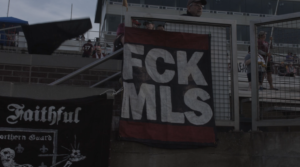
Founded in 2012, Detroit City has been a stalwart of the independent soccer scene since its inception. Initially playing in the amateur and then semi-pro NPSL, Detroit made the jump to being a full professional club in 2019 when they, along with fellow independent powerhouse Chattanooga FC, moved to the newly formed National Independent Soccer Association.
NISA was founded in 2018 as a sanctioned third division of professional soccer in the United States, existing beneath the USL Championship and on par with USL’s newly formed second division, USL League One. NISA was founded to create an open system involving promotion and relegation in which clubs could compete at a high level and eventually move to the (then still active) NASL. While that was the original plan, a string of unfortunate events, including the folding of the NASL, led to NISA having to re-organize and re-evaluate.
Rather than a pro/rel system with the NASL at the top, NISA created a series of leagues, including professional and amateur divisions, which would provide a home for the nation’s top independent clubs. While NISA elected not to implement promotion and relegation between leagues, the association did decide to create multiple inter-league tournaments that saw the top amateur and semi-professional clubs play against professional clubs from the pro division. While the system worked, especially for smaller clubs, it was a far cry from the open system with room for growth that larger clubs like Detroit were hoping for.
Originally, NISA was poised to play without either Detroit or Chattanooga. Both clubs had become frustrated with delays in the leagues founding and constant restructuring and committed instead to play in the newly formed pro division of their current league at the time, the NPSL. Both clubs played in the inaugural “Members Cup” in the fall of 2019. The tournament consisted of future NPSL-Pro clubs and was designed to kick start the new professional league that would begin in 2020. Despite this kick start, however, the NPSL-Pro division fell apart before it began after failing to find anyone willing to sanction and insure a league that simultaneously consisted of professional and amateur athletes.
While NPSL-Pro never got off the ground after their fall tournament, NISA’s pro league launched relatively successfully in 2019, with a split fall and spring season that saw eleven total clubs compete in the inaugural year (seven in the fall and eight in the spring). Detroit City and Chattanooga both made their NISA debut in the spring half of the season after abandoning the non-starter NPSL-Pro. While DCFC’s entrance into the league was as smooth as could be hoped for, given the circumstances, Chattanooga’s was a bit more contentious.
Why? In the summer of 2018, before the formation of either NPSL-Pro or NISA, Chattanooga became the focus of the lower division soccer community after the USL announced that they’d be placing a USL League One club in the city, the Chattanooga Red Wolves. The move came just months after Chattanooga FC had refused to join USL, banking on the formation of NPSL-Pro, and believing that their future looked brighter for the club if they remained independent.
The move to place a USL League One club in Chattanooga was contentious, with enough back dealings and side plots to make a documentary. (Trust me: I was making one until the pandemic hit.) Amongst the shadier dealings was the departure of Chattanooga FC general manager Sean McDaniel to immediately take up a new job with the Red Wolves, the attempt of the Red Wolves to force CFC out of their home stadium, and the alleged poaching of multiple coaching staff from CFC. That’s all without getting into the alleged financial fraud.
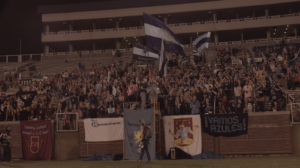
While those close to the club publicly preached indifference about the Red Wolves’ existence, feelings were a bit sourer behind closed doors, and ownership more than likely felt the pressure of the USL encroaching on their territory. Whether in an attempt to recapture the spotlight in Chattanooga or a happy coincidence of timing, in early 2019 CFC made an announcement of their own. In a beautifully antithetical move to that of the USL, Chattanooga Football Club announced that they would be offering public shares in their club, becoming the first publicly-owned professional soccer team in the United States.
But what does Chattanooga’s confrontation with USL have to do with Detroit City? Everything.
Whether you like to admit it or not, it’s hard to deny the success and growth of USL over the last ten years. Since the league’s inception, its swelled from 11 to 31 teams in its first division, with six more being added in the next three years. It’s quickly adding prime markets with an appetite for soccer and solidifying itself as the definitive second tier in US Soccer.
While both Detroit and Chattanooga had dealt with the complications and frustrations of becoming professional independent clubs, only Chattanooga outright rejected USL and committed fully to an independent future. Because USL has so many rules about where teams can be located in proximity to others (both USL and MLS) when USL elected to place a franchise in the city to compete with Chattanooga FC, it virtually guaranteed that CFC would have no chance of joining USL in the future, even if it wanted to.
While DCFC and its fans stood ideologically opposed to USL and a closed system of soccer, they never outright rejected the league. With no USL or MLS teams within the area, DCFC always remained a potential expansion candidate, regardless of how outspoken the fans or club were against USL, USSF, or any US soccer governing body. Because of this, Detroit City has had the luxury of the last three years to watch what’s happened with NISA, Chattanooga FC, and the USL, all while remaining uncommitted to any long-term future.
Whether DCFC’s lack of real commitment to a specific future was by design or simply a result of circumstance is impossible to say from an outside perspective. Regardless of how it’s come about, however, it certainly appeared to benefit Detroit.
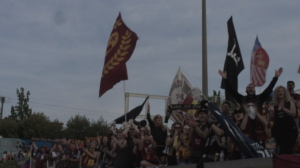
With DCFC’s announcement that they’ll be joining the USL starting in 2022, they’ve broken from their shared path with Chattanooga FC, removed themselves from the uncertainty and flux of NISA, and positioned themselves to grow within and alongside the USL.
Earlier this year, USL announced that it would be exploring the potential of implementing promotion and relegation between its two professional leagues, creating the first (somewhat) open system in professional US soccer. While it’s not the totally open, independent league that Detroit City and so many were hoping for, it could be a critical first step in creating a sustained and viable path for smaller clubs to grow and reach sustained success at the professional level.
While leagues like NISA have taken a grassroots approach to an open system of soccer, USL has worked backward. Instead of allowing independent clubs to grow on their own backed by the community, USL’s franchise system has created clubs with deeper pockets and financial safety nets insured by steep financial requirements to join the league. While this alienated smaller markets and clubs without a single wealthy investor, it allowed USL clubs to remain largely financially secure and ensured the overall stability of the league. Stability that Detroit City should welcome and Chattanooga should envy.
Chattanooga’s entire bet when they rejected the USL was that they, as an independent club, could grow more on their own than within the closed system of USL. At the time, it was a fair bet to make. However, with NPSL-Pro’s failure and NISA’s struggle to achieve many of its initial goals, many fear Chattanooga’s rejection of USL may have been a costly mistake.
While Detroit sat on the sidelines, not committing one way or the other in regards to USL, Chattanooga made the early decision that it would remain independent, for better or worse. While Chattanooga FC remains a fixture in its community, providing high-level professional soccer and outstanding community outreach and engagement, some fans fear that CFC’s decision to shun the USL may drastically handicap the clubs’ ability to grow competitively within the sport.
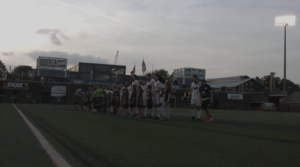
Currently, one of the major appeals of NISA, and other independent lower division leagues, is a dramatic difference in the capital required to start a club. As it stands, clubs that wish to play at the USSF sanctioned D3 pro level of play, including NISA and USL League One, must have a principal owner who owns 35% of the club and possess a net worth of over ten million. That’s only half of what’s required of a principal owner at the D2, USL Championship level, and that’s without including the added D2 requirements of full-time staff, larger stadiums, amongst a plethora of other provisions.
Those intensive requirements, along with the exorbitant expansion fees required by USL, have always made independent leagues like NISA much more appealing for small clubs looking to test the professional waters. However, with the USL likely to implement promotion and relegation in the coming years, investing money into a league that could offer promotion from third to second division of US soccer at no extra cost seems to be a much better value.
Should the USL decide to implement pro/rel, clubs in NISA like Chattanooga could be left playing at the D3 level indefinitely. At the same time, those currently in USL League One could realistically dream of playing at the D2 USL Championship level within the next decade or less. In no way does this diminish Chattanooga FC’s role within their community, but it could certainly leave those more invested in the level of competition wanting for more.
On the other side of things, Detroit City now finds itself allied with the quickest growing soccer league in the United States and in a stable position for the first time in their professional existence. While many (including myself) may question the morality of the move considering DCFC’s previous positioning, it’s hard to argue against a club doing what’s best for its own well-being.
At the heart of football is a love of the game and the community that surrounds it. It’s not about money, trophies, or fame, but the sport and the people that love it. Whether your favorite club is an MLS franchise, an independent NISA club, or a team overseas, the important thing is that it’s the club you love. Regardless of division, sanctioning, or professional status, our clubs will always be our clubs, and our connections to them and to the people we’ve met around them will always be genuine and authentic. Football is a feeling, and we all feel differently. Respect others and their allegiances, support your own club how you see fit, and most of all, enjoy your football—no matter where it’s played.
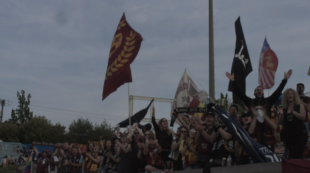

Thanks for helping me understand the backstory here.
You need to get your facts straight in making accusatory remarks that could get you in trouble.
Your “facts” about the CFC Red Wolves “conflict” is far from factual.
Don’t let the facts get in the way of a good story…
What are the facts about the CFC and Red Wolves conflict?
It’s a nice story but the truth is they have come to reality. Also there will be a vote in December about the faux pro/rel; I’ll guess that won’t happen anytime soon.
You need to get your facts straight in making accusatory remarks that could get you in trouble.
Your “facts” about the CFC Red Wolves “conflict” is far from factual.
Don’t let the facts get in the way of a good story…
Lighten up Bill and make the counter argument in order to provide insight.
.
Pretty much just a kid still.
Thomas.
When I was a junior in college I took a creative writing class and someone criticized my work by telling me I “overshot poetry by about China.”
.
It was debilitatiing criticism and emabarrasing. Stopped me in my tracks for years —ultimately though I began writing again– a little wiser.
.
Pay Bill no mind- he’s abrupt and inconsiderate to the time spent sharpening the instrument…. but be sure to learn as well.
If the facts about cfc and red wolves is unfactual then he should ask me where he was off.
Listening to one side of a story and just reporting that is not professional.
But you can defend him for that. Amazing
I’m not defending him, I’m pointing out your tone in this instance is inconsiderate and unneccessary.
.
Do some reflecting, Bill- he’s a 19,20,21 year old.
.
Or don’t.
Why doesnt he reply and ask for clarification
Hey Bill,
Thanks for reading the piece. Sorry for the delay in reply. I don’t usually make a habit of replying to comments on my work, but if you have a genuine issue with any of my facts or opinion and would like to provide feedback, or clarification, please feel free to email me at my work address. Thhill711@gmail.com